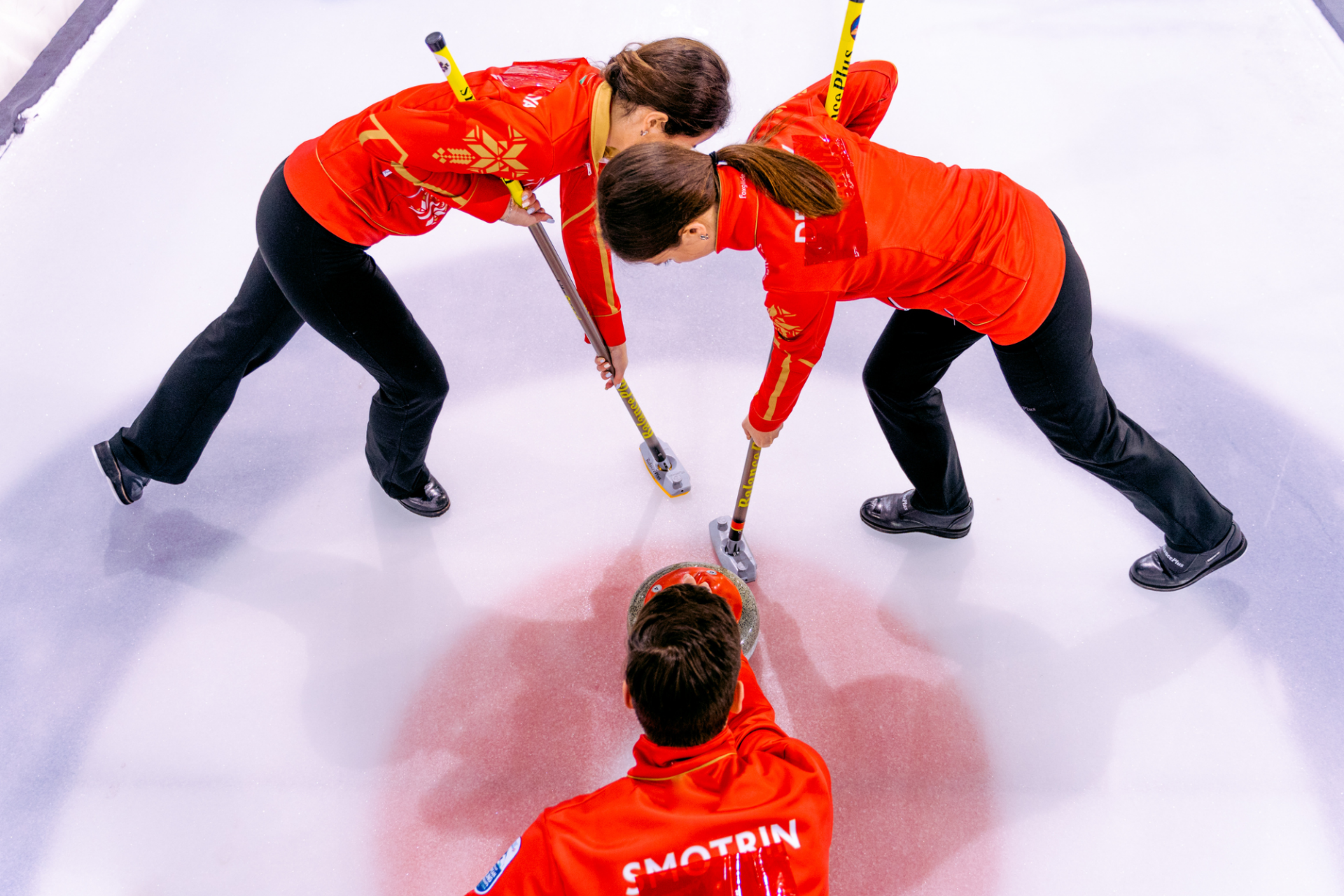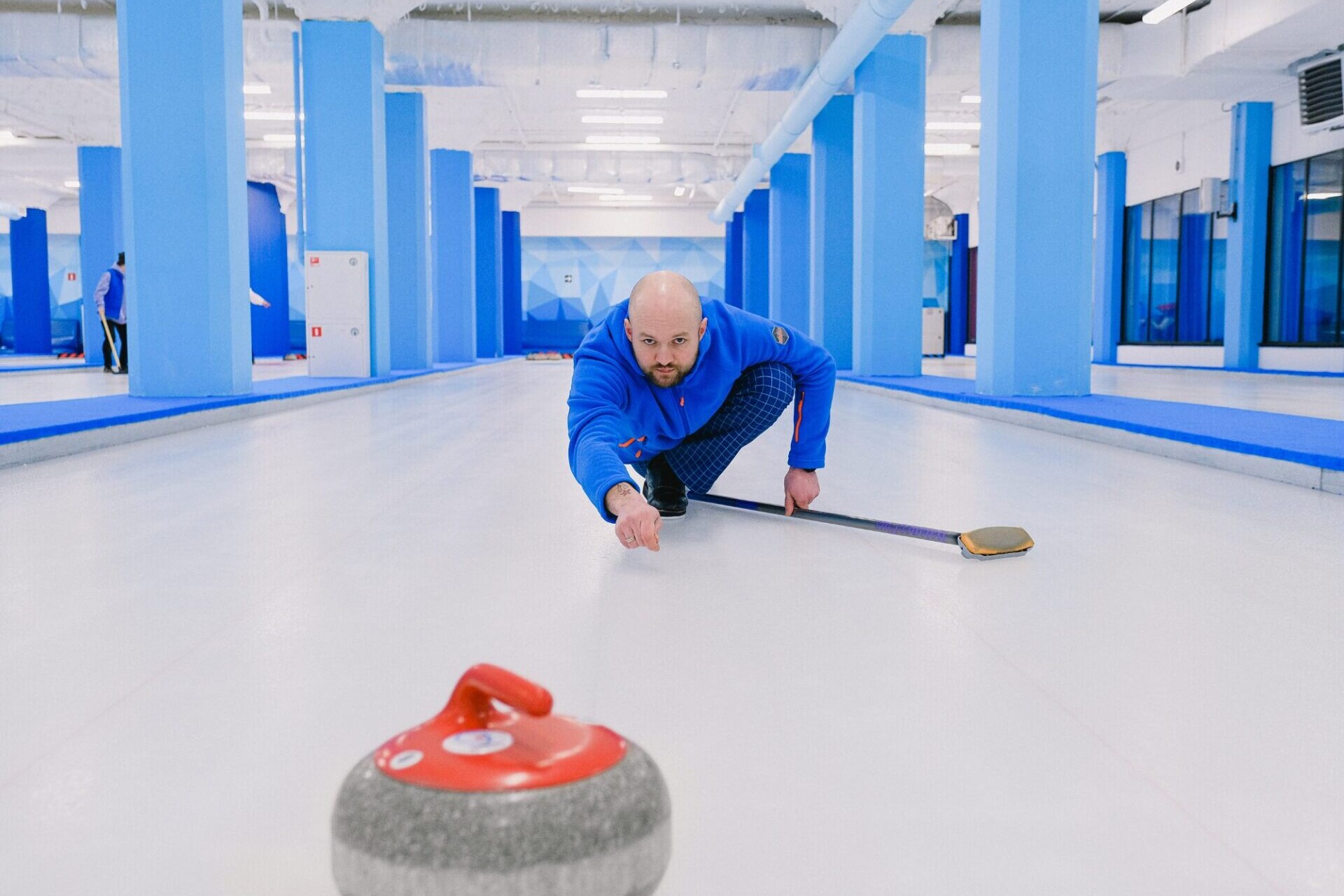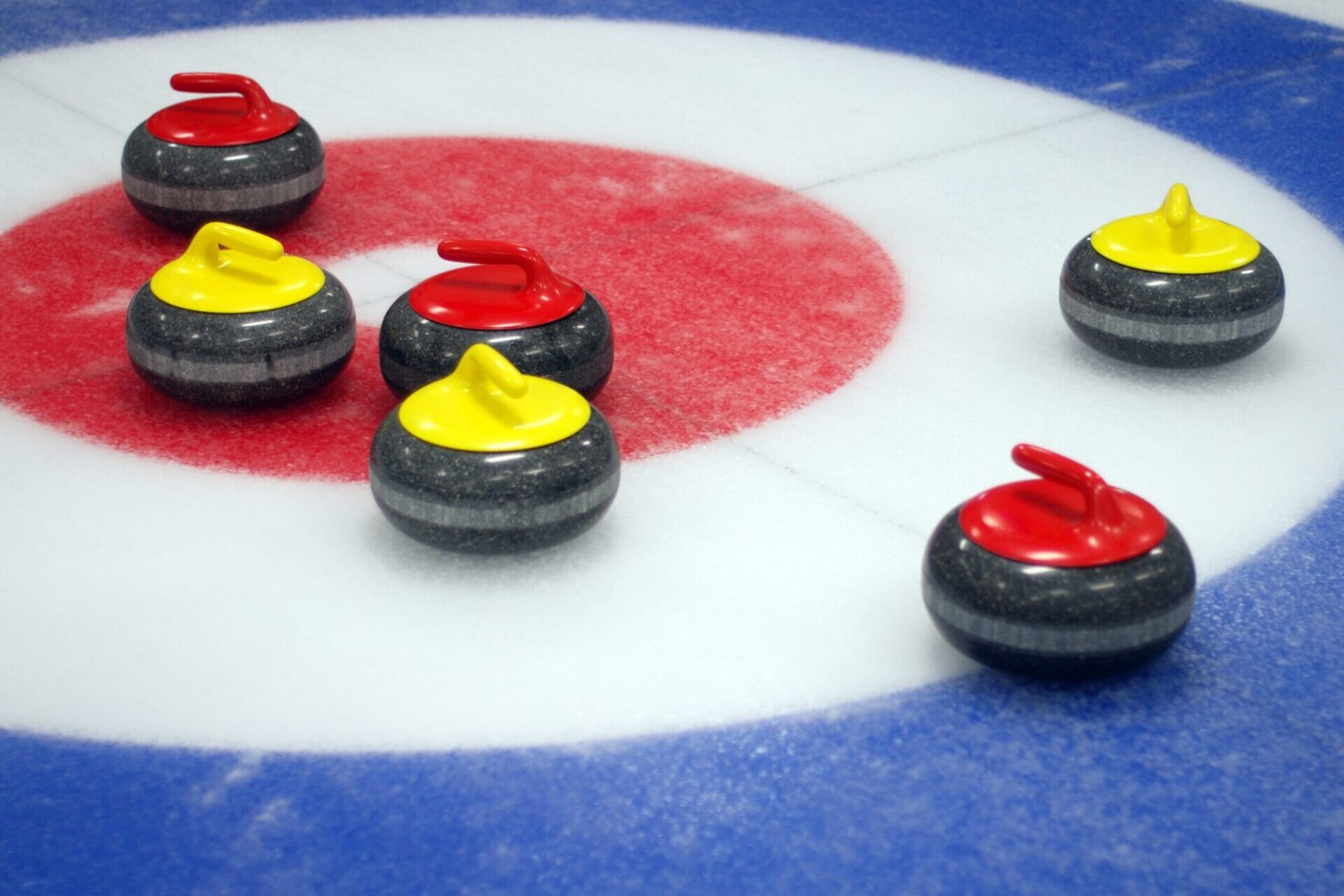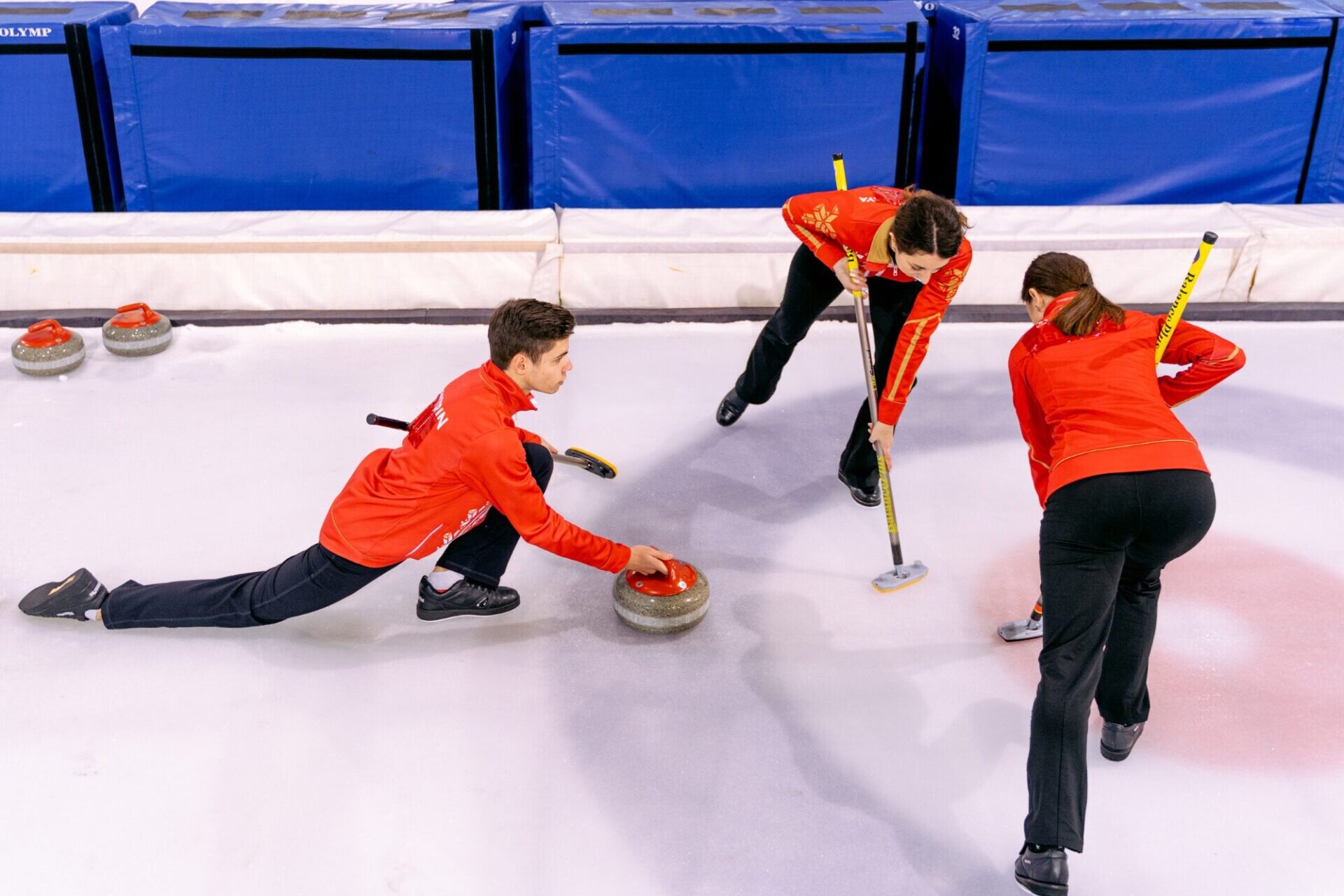Curling: history, rules and anecdotes
Why take an interest in curling?
Because curling is a unique team sport that combines fine strategy, pinpoint accuracy and a friendly spirit! Nicknamed “chess on ice”, it pits two teams against each other as they slide heavy granite stones across the ice, aiming at a target. Between the frenetic sweeping and the crucial tactical choices at each throw, the spectacle is as astonishing as it is captivating. Whether you’re a fan of winter sports or simply curious, it’s hard to remain indifferent to this icy ballet where each throw can turn the game on its head.
👉 In this article :
- A dive into the history of curling
- Some surprising fun facts
- And above all, a quick and clear reminder of the rules to help you understand how curling is done.
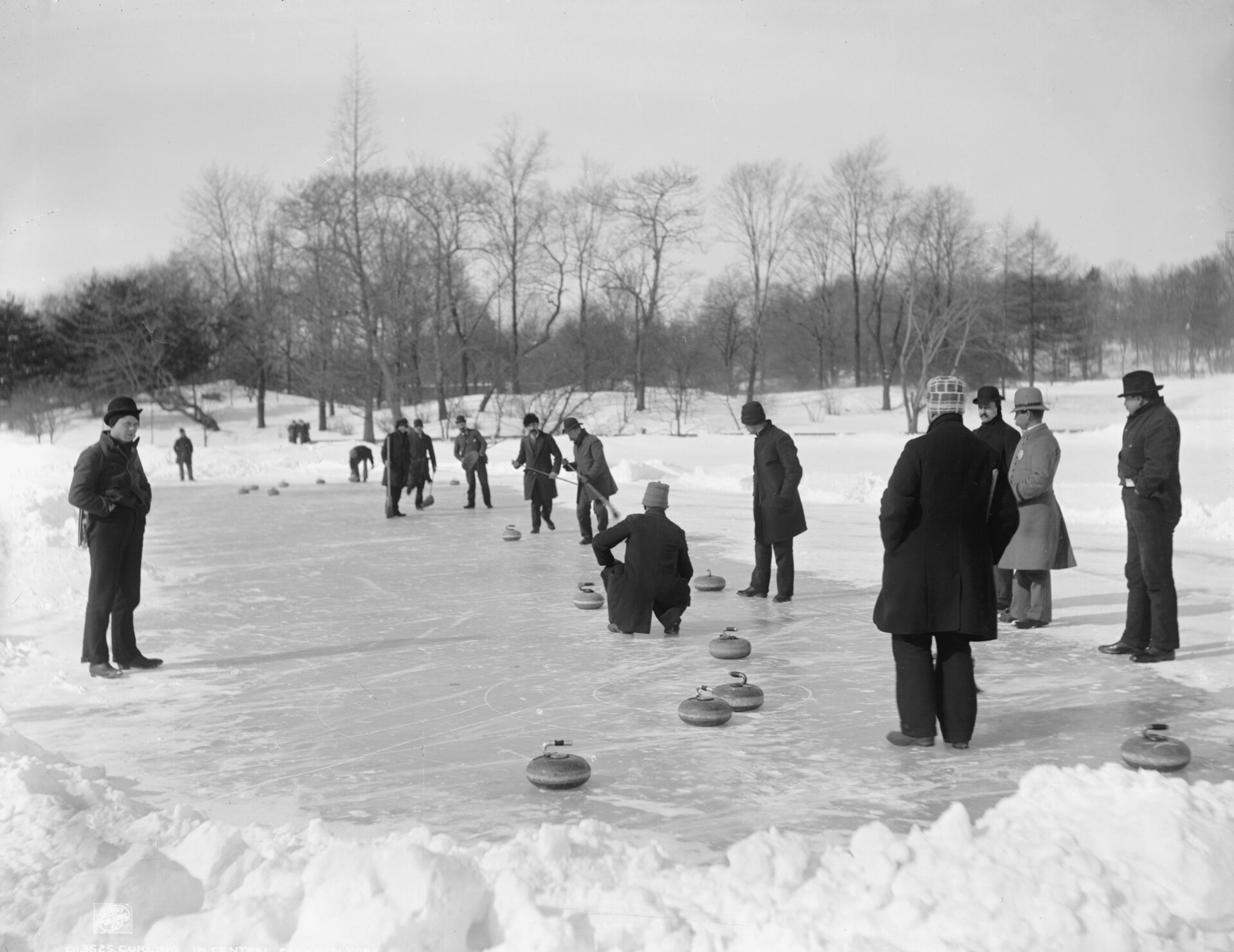
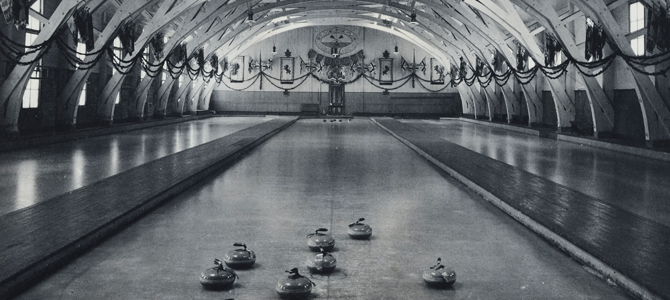
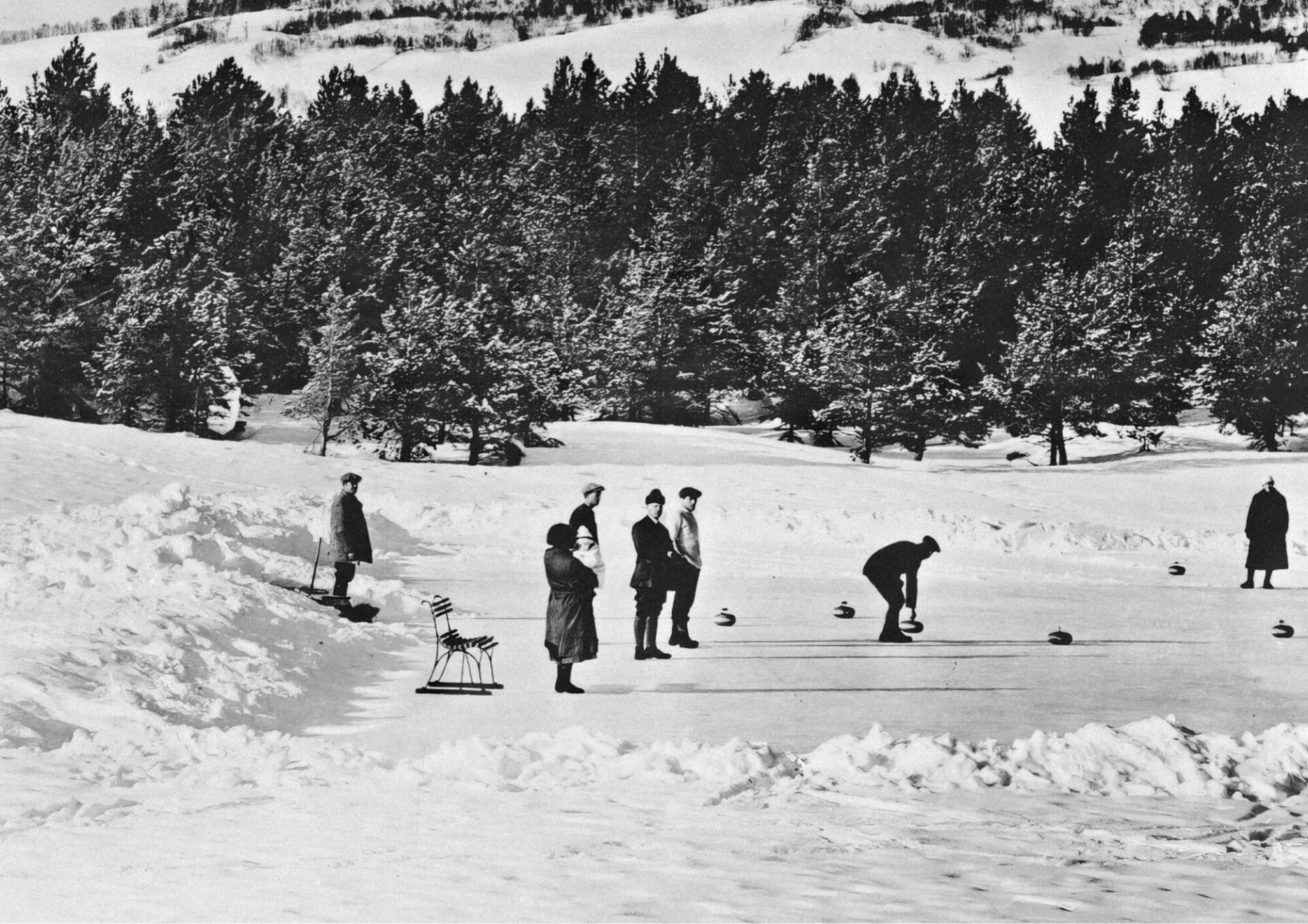
Curling history
Curling has its roots in 16th-century Scotland. During harsh winters, the inhabitants of the Scottish Lowlands enjoyed sliding large polished stones across frozen ponds and rivers. This winter pastime soon became a regular social activity in the villages. The word “curling”, derived from the English verb “to curl”, refers to the curved trajectory the stone takes as it glides over the ice.
The first official curling club was the Kilsyth Curling Club in Scotland in 1716. It was also at this time that the rules of the game began to be codified. In contrast to primitive curling on natural ice, covered and artificial rinks were built later, enabling more regular and precise curling.
In the 19th century, thanks to the expansion of the British Empire, curling crossed borders into other cold countries such as Canada, the United States, Switzerland and Scandinavia. The sport began to take on an international structure.
In 1959, the very first men’s world championship (then called the Scotch Cup) was held. The World Curling Federation was founded in 1966 to oversee the sport worldwide. Curling made a symbolic appearance as a demonstration sport at the 1924 Winter Olympics in Chamonix, but it wasn’t until 1998 that it became an official medal sport at the Nagano Olympics, for both men and women.
Since then, curling’s popularity has grown steadily, thanks in particular to television, which emphasizes the strategic aspect of the game. Today, curling is played by millions of people worldwide, with world championships, professional circuits and a regular presence at the Olympic and Paralympic Games.
Introduced by Scottish settlers, curling became very popular in Canada in the early 19th century. In 1807, the Royal Montreal Curling Club was founded, and today it remains the oldest active sports club in North America.
Today, there are hundreds of clubs and leagues in every province of the country. Curling is an integral part of Canadian culture, and is widely practised at all ages. In fact, Canada is home to the largest number of curlers in the world. The country is also one of the most successful in international competitions.
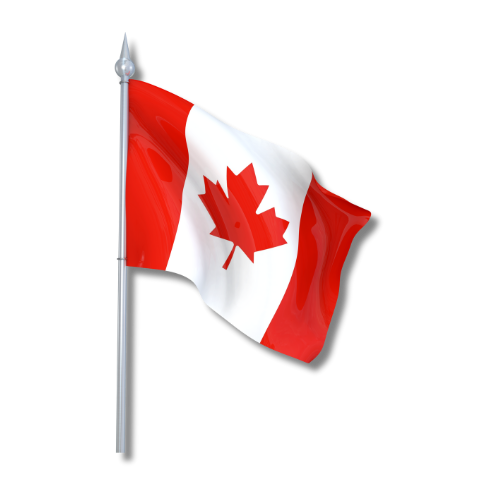

4 fun facts about curling


Most curling stones are made from a very special granite quarried on a small Scottish island called Ailsa Craig. This exceptional material is very dense and resistant, making the stones virtually indestructible: some have been used in competition for over 40 years without losing their quality!
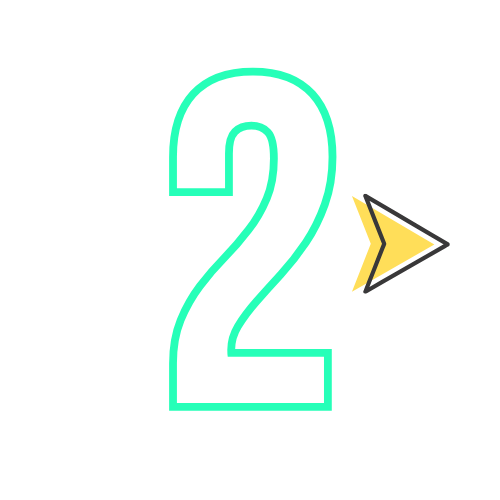
Once made of straw, curling brooms have come a long way! Today, they’re made from ultra-light materials like carbon fiber. Their efficiency is such that they can actually influence the trajectory of the stone by warming the ice by a few degrees.
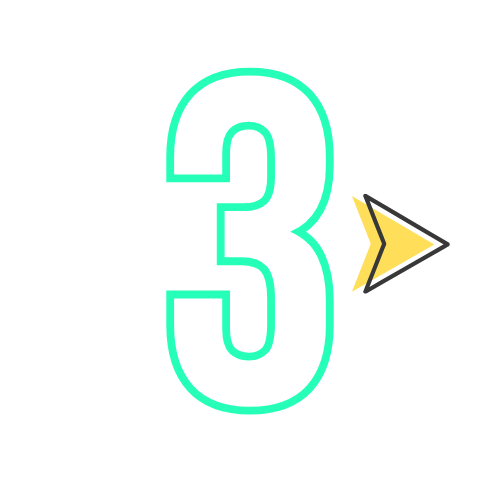
Wheelchair curling, a Paralympic discipline since 2006, follows almost the same rules as traditional curling… with one difference: no sweeping! The players throw the stone with a telescopic stick, which demands formidable precision.
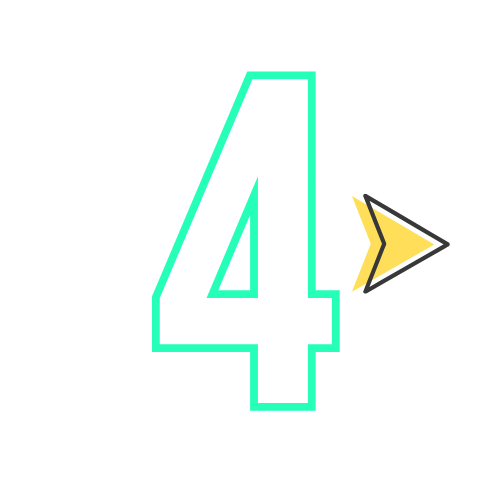
In English, curling is known as “The Roaring Game”. This funny nickname comes from the muffled roar produced by the stone as it glides over the ice. If you’re attending a match, listen carefully: you’ll hear that distinctive curling purr, especially when the stone accelerates on the icy rink.

The main rules of curling

GOAL OF THE GAME
Curling is a sport of precision and strategy that pits two teams of four players against each other on an icy track. The principle is apparently simple: each team takes it in turns to throw granite stones towards a circular target on the ice, called the “house”. The aim is to place the stones as close as possible to the center of the house (the button), while trying to dislodge the opposing stones. A game is divided into successive rounds (called ends). At the end of each end, the score is determined: only the team whose stone is closest to the center scores points, at the rate of one point for each stone better placed than the closest stone of the opposing team. Both teams have eight stones each per end (each player throws two stones). In total, an official curling match is usually played over 8 or 10 ends, and the team with the most points wins.
LAND AND EQUIPMENT
Curling is played on a rectangular ice rink 45.72 m long and 4.75 m wide. At each end is the target (the house), drawn by three concentric circles 3.66 m, 2.44 m and 1.22 m in diameter. Players launch their stones from a starting block (the hack) and must release the stone before a line called the hog line. Each curling stone weighs around 20 kg and has a coloured handle on top to rotate it during delivery. Players are equipped with brooms (or brushes) to sweep the ice, and wear special shoes: one foot has an ultra-slippery sole (the slider) to allow fluid movement during the throw, while the other shoe has a non-slip sole (the gripper) to walk and sweep without slipping. This simple yet effective equipment enables curlers to control the speed and direction of the stones while moving with complete stability on the ice.
MAIN RULES
In curling, the two teams throw their stones alternately in each end. The skip stands on the side of the target and indicates the strategy and the target area by pointing with his broom, while one of his teammates prepares to throw from the other end. When the stone is released, one or two players from the team accompany its path, vigorously sweeping the ice in front of the stone. Why sweep? Sweeping slightly warms the ice and reduces friction, causing the stone to slide further and straighter than it would without sweeping. Players therefore adjust the intensity of the sweep to influence the trajectory: by sweeping hard, they extend the stone’s travel and soften its curve (the curl), while by not sweeping, the stone slows down faster and “curls” more (i.e. it turns and follows a curved trajectory).
An end is reached once all 16 stones (8 from each team) have been played. The points are then counted and recorded, and a new end begins in the other direction of play (the stones are thrown to the other house). During play, certain rules ensure fairness: for example, a stone must go beyond the hog line to be valid (otherwise it is removed from play), and if a player unintentionally touches a stone in play with his broom or body (said to have burnt the stone), it is immediately set aside.
Come and play sports with us!
🎉 Focus on BougeBouge events 🎉
📅 On the programme: sport for all !
- BOUGEBOUGE BEACONSFIELD 2025 (13 /07/2025 ) : 1, 2 or 5 km turf course in Centennial Park, on the marina’s waterfront – a fun way to get moving with family and friends
- MARATHON BOUGEBOUGE ET FESTIVAL DE VERDUN 2025 (14/09/2025):come and enjoy the mild September temperatures on a Boston-qualifying, Gold-certified course, with distances for all, from 1 km to 42.2 km.
- BOUGEBOUGE WAKEFIELD COURSE DU PONT COUVERT 2025 (12/10/2025):Discover the covered bridge and Gatineau Park during a friendly event with courses of 3, 5, 10 or 21.1 km, perfect for getting active with family and friends.
- BOUGEBOUGE KIRKLAND 2025 (19/10/2025) : Participate in BougeBouge Kirkland this fall and take up the 1 to 21.1 km challenge in a friendly and colourful atmosphere, solo, with family or friends.
Whether you’re an avid runner, an outdoor enthusiast or simply looking for a festive occasion, the upcoming BougeBouge events will provide you with a unique sporting experience in every corner of Quebec. So get set, get ready, get moving!🏃♀️🎉
Book your place now!
And to make sure you don’t miss a thing, you can follow us on our social networks!

